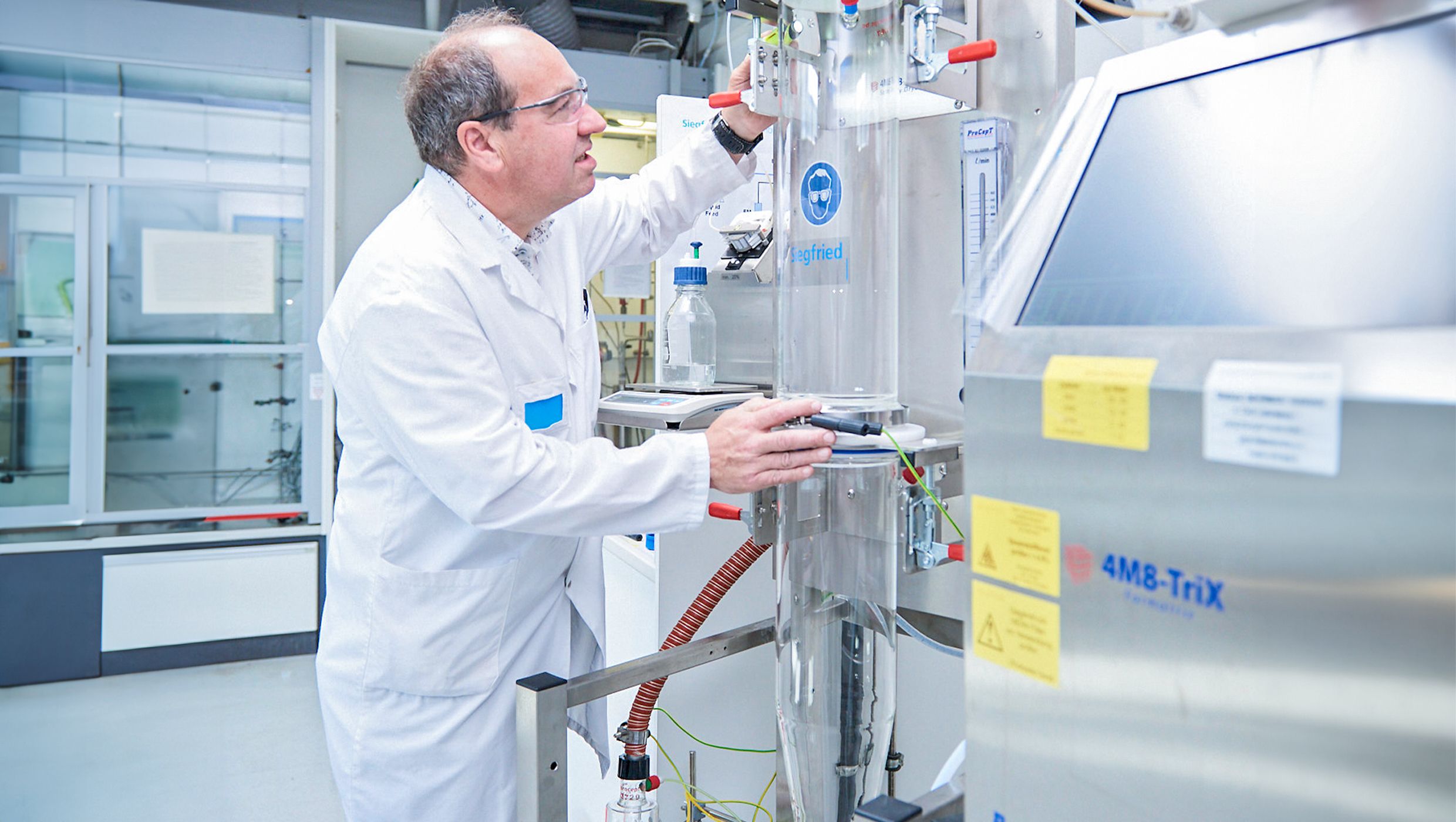
Maximising product potential with spray drying
Submitted by:
Andrew Warmington
Michael Levis of Siegfried overviews the possibilities of a key pharmaceutical technology
The pharmaceutical and biotechnology industries constantly seek innovative methods to enhance product stability, solubility, bioavailability and ease of use. Within this realm, CDMOs serve as invaluable partners in the development and production of high-quality drug products. Among the array of cutting-edge technologies that have transformed the CDMO industry, spray drying has emerged as a versatile and indispensable tool.
Before we dive into its myriad applications, let’s first understand the fundamentals of spray drying. This process entails the conversion of a liquid into fine droplets, followed by controlled drying of each single droplet to form a solid powder.
The key steps involved include atomisation, in which liquid is transformed into small droplets, which amplifies the surface area for efficient drying, and drying. The droplets enter a hot gas flow in the drying chamber where they lose solvents rapidly, finally resulting in the formation of a solid product. Because of evaporation energy, the product stays relatively cool in this process.
Key applications
Spray drying has many uses in the CDMO industry, including isolating thermal-instable products. It is a low-thermal-stress method that can be employed to isolate thermally unstable substances, such as some APIs or even biological substances. This method is especially advantageous for eliminating the need for costly freeze-drying processes, providing an easily dispensable product, and potentially removing problematic residual solvents.
For those seeking to improve the bioavailability of a product or increase solubility for downstream processes, spray drying offers a compelling solution. It enables the isolation of APIs in their amorphous form, which can significantly boost solubility and bioavailability. Whether the goal is to isolate the API in a pure amorphous state or create amorphous solid dispersions to stabilise the compound, spray drying can provide the necessary flexibility.
Another possibility is to use spray drying to form complexes with, for instance, cyclodextrins or impregnate mesoporous carriers like silica, ion exchange materials or functional calcium carbonate.
For products prone to decomposition, spray drying can be a game-changer. It allows for the combination of product with stabilisers at a nearly molecular level. This improves the overall stability of an API or formulation. It is possible to encapsulate the product to enhance its stability and access improved product properties.
Spray drying can also be used to make solid forms for storage and dispensing. Some products may not naturally exist in solid forms, which is often essential for storage and dispensing. This is particularly relevant for biologics, substances that are challenging to crystallise, oils carried on particulate carriers or molecular-level API mixtures.
Finally, spray drying can be used to tailor powder properties. The technique does not just convert liquids to solids; it also offers extensive control over particle design. By adjusting various spray drying parameters, one can influence the bulk or tap density, flowability, and compressibility of an API. This level of control ensures that the powder properties align with specific requirements.
Conclusion
In the CDMO industry, the versatile applications of spray drying have revolutionised the development and production of pharmaceuticals and biotechnological products. This technology offers solutions for thermal instability, bioavailability enhancement, product stability, solid-state formation and tailoring powder properties. As the industry continues to evolve, spray drying will remain a vital tool for CDMOs, unlocking new possibilities in drug development and manufacturing.
Contact
Michael Levis
Head of Process Technologies/Principal Scientist - Particle Technologies
Siegfried
www.siegfried.ch
